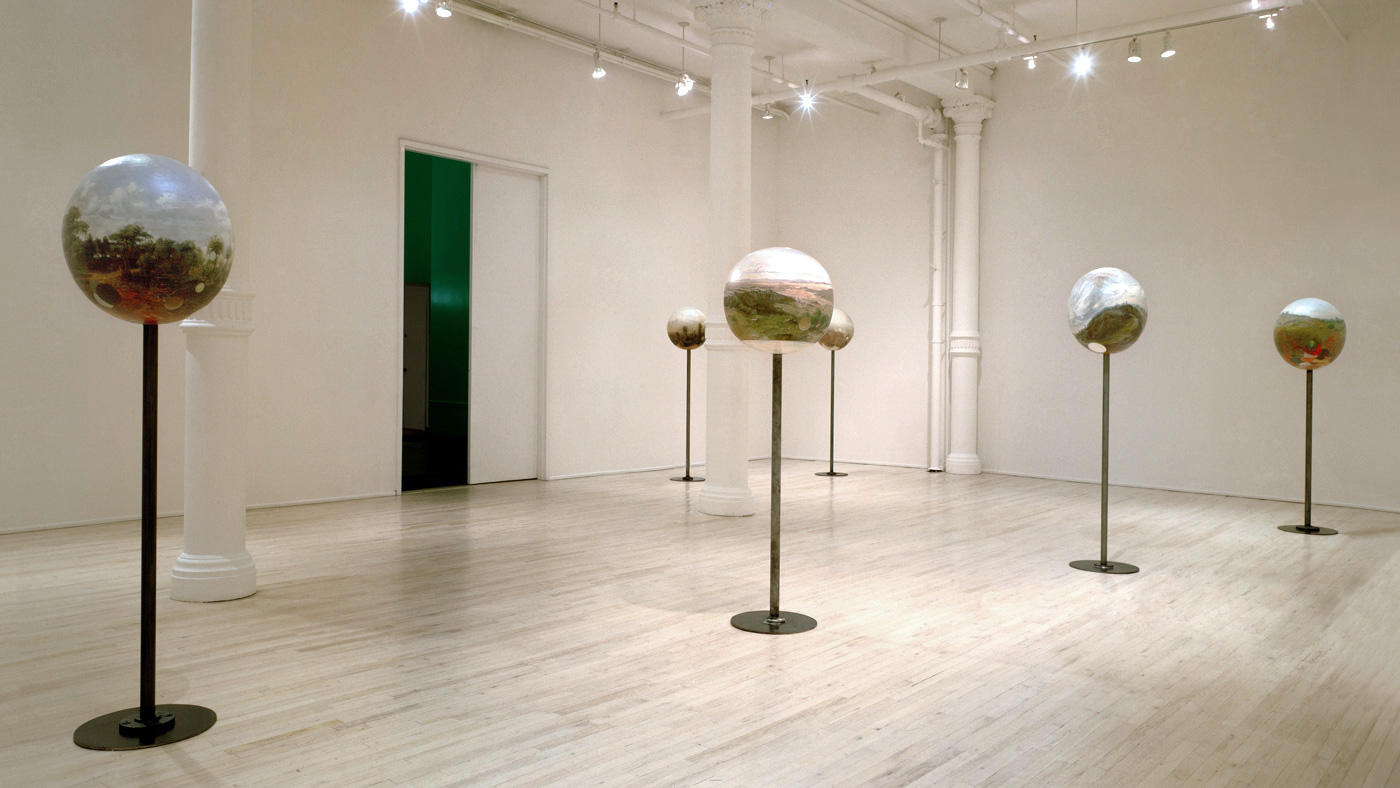The Astronomer
1987 – 1990

At first the effect is disorienting; one looks at a globe expecting to see a map. To find oneself encouraged, instead, to see through the surface of the globe and find a landscape comes as some surprise. In fact, what the globes show are neither two-dimensional maps nor mimetic portrayals of landscapes, but representations of the visual field itself —the ovoid shape, fading at the periphery, that the human eye appropriates. What is embodied, then, is not so much something to be seen as something already seen, not a landscape itself but the phenomenal quality of the eyes’ perspective on a landscape, presented again to the viewer. Indeed, if one stands so close to the pieces that they fill one’s field of vision, the effect of the fading of the colors and forms toward the curved edge of the globes is striking; they seem to be looking back, as one sees the form of the landscape mirroring the circle of the eyes’ field, rather than presented in the contrived flatness of a stretched canvas. Taken together, the pieces recall one of Emerson’s essays on nature, which begins, “The eye is the first circle; the horizon which it figures is the second; and throughout nature this primary figure is repeated without end. It is the highest emblem in the cipher of the world.”
—James Lewis, Artforum, 1989
In 1668 Johannes Vermeer finished The Astronomer, a painting that provokes what it represents —the entrancing coupling of sight, imagination, and understanding. In the role of spectators, we undergo this coupling as we engage with the painting. Between 1987 and 1990, I produced a series of spherical landscapes based on the masters of naturalist landscape painting. Somewhat in the spirit of Vermeer, my Astronomer series seeks to trigger a distinctive way of thinking about pictorial space, engendering an experience that is thoroughly integral to vision and yet seemingly contradictory, a sort of painterly counterpoint harmonics. The sphere’s physical convexity presents itself in opposition to the depicted landscape’s visual concavity, and resolves the pictorial dimension as a plane that—pace Clement Greenberg—cannot be assimilated to the support. The resulting ambivalence, I hope, literally brings viewers to their senses, and shakes the foundations of their assumptions about painting’s purported two-dimensionality.
—Yishai Jusidman
src="../wp-content/uploads/yishai-jusidman-the-astronomer-1.jpg">
src="../wp-content/uploads/yishai-jusidman-the-astronomer-2.jpg">
src="../wp-content/uploads/yishai-jusidman-the-astronomer-3.jpg">
src="../wp-content/uploads/yishai-jusidman-the-astronomer-5.jpg">
src="../wp-content/uploads/yishai-jusidman-the-astronomer-5b.jpg">
src="../wp-content/uploads/yishai-jusidman-the-astronomer-6.jpg">
src="../wp-content/uploads/yishai-jusidman-the-astronomer-6b.jpg">
src="../wp-content/uploads/yishai-jusidman-the-astronomer-9.jpg">
src="../wp-content/uploads/yishai-jusidman-the-astronomer-10.jpg">
src="../wp-content/uploads/yishai-jusidman-the-astronomer-11.jpg">
